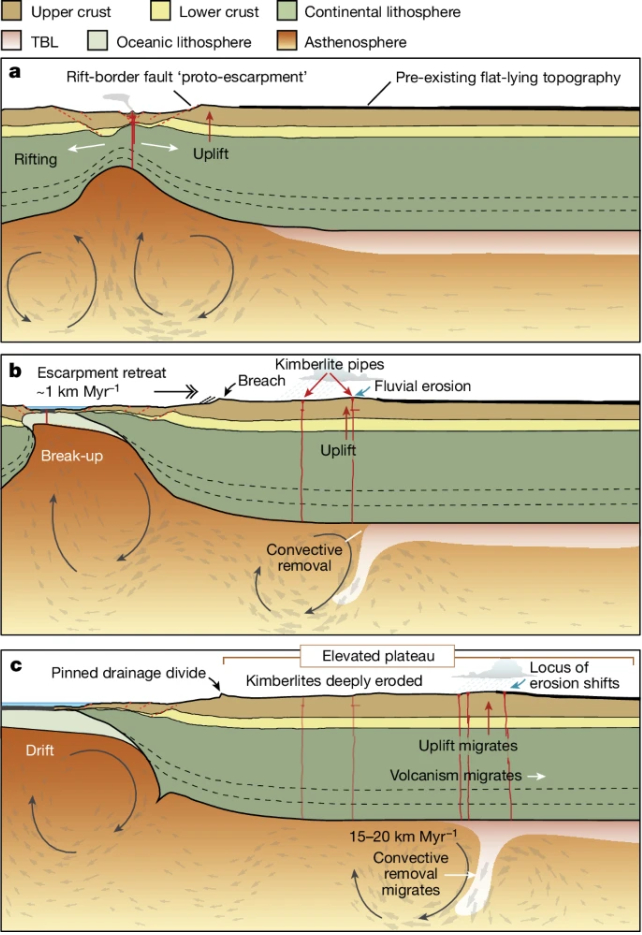Deep within our planet's continents rise plateaus that defy easy explanation. No volcano, no continental collisions, no rising plumes of molten rock can neatly make sense of their mix of location and dramatic features.
Using statistical analysis and simulations informed by geological studies, researchers from the UK and Germany have thrown a radical new idea into the mix of possible solutions, arguing slow-moving instabilities triggered by rifts in Earth's fractured crust are behind the strange anomalies.
From the Brazilian Highlands to South Africa's Great Escarpment to the Western Ghats of India, our planet is dotted with vast, flat highlands rimmed with steep walls that dominate the landscape.
These monstrous plateaus lie hundreds of kilometers from the nearest rift over sections of crust thought to be geologically stable, their birth timed tens of millions of years after the forces pushing at the nearest continental seams fell quiet. This makes it difficult to pin the blame squarely on Earth's tectonic movements.
"Scientists have long suspected that steep kilometer-high topographic features called Great Escarpments – like the classic example encircling South Africa – are formed when continents rift and eventually split apart," says University of Southampton geologist Tom Gernon.
"However, explaining why the inner parts of continents, far from such escarpments, rise and become eroded has proven much more challenging. Is this process even linked to the formation of these towering escarpments? Put simply, we didn't know."
Though there is almost certainly a mix of geological forces linking the growth of these escarpments with the rupturing of Earth's hide, no one theory accurately embraces all of their characteristics.
Some venture that the wearing away of the rock far below relieves the crust of mass, allowing it to flex into shape. Others suspect drastic differences in temperature drive convection in the mantle, pushing up the rock, or perhaps erosion and weathering instead cut away at the coastal landscape beyond.
This new suggestion combines processes with a slow-moving churning of the mantle that rolls beneath the crust at a rate of just 15 to 20 kilometers (about 9 to 12 miles) every million years.
Following on from a previous study on the processes that drag diamonds to the planet's surface, the team discovered the stretching of the crust as plates tease apart creates instabilities in the mantle, which ripples out beneath the solid lithosphere.

"This process can be compared to a sweeping motion that moves towards the continents and disturbs their deep foundations," says Sascha Brune, a geophysicist at Potsdam University in Germany.
The team's modeling suggested the speed of the waves that would have followed the breakup of Gondwana reflected the timing of erosion surrounding South Africa's Great Escarpment.
It's thought this slow echo of molten rock might grind away at the ancient roots of continents known as cratons.
"Much like how a hot-air balloon sheds weight to rise higher, this loss of continental material causes the continents to rise – a process called isostasy," says Brune.
The loss of material from the craton below and the erosion of weathered rock from the surface could together account for the dramatic lifting of the flattened landscape, with the team's models accurately describing the mix of plateaus and steep escarpments found around the globe.
Understanding the dynamics of processes hidden far beneath the surface not only helps us accurately map changes in the landscape responsible for mineral formation and precious resources, but can also help us better interpret historic changes in the climate in relation to the rise and fall of continents.
"Destabilizing the cores of the continents must have impacted ancient climates too," concludes Gernon.
This research was published in Nature.
